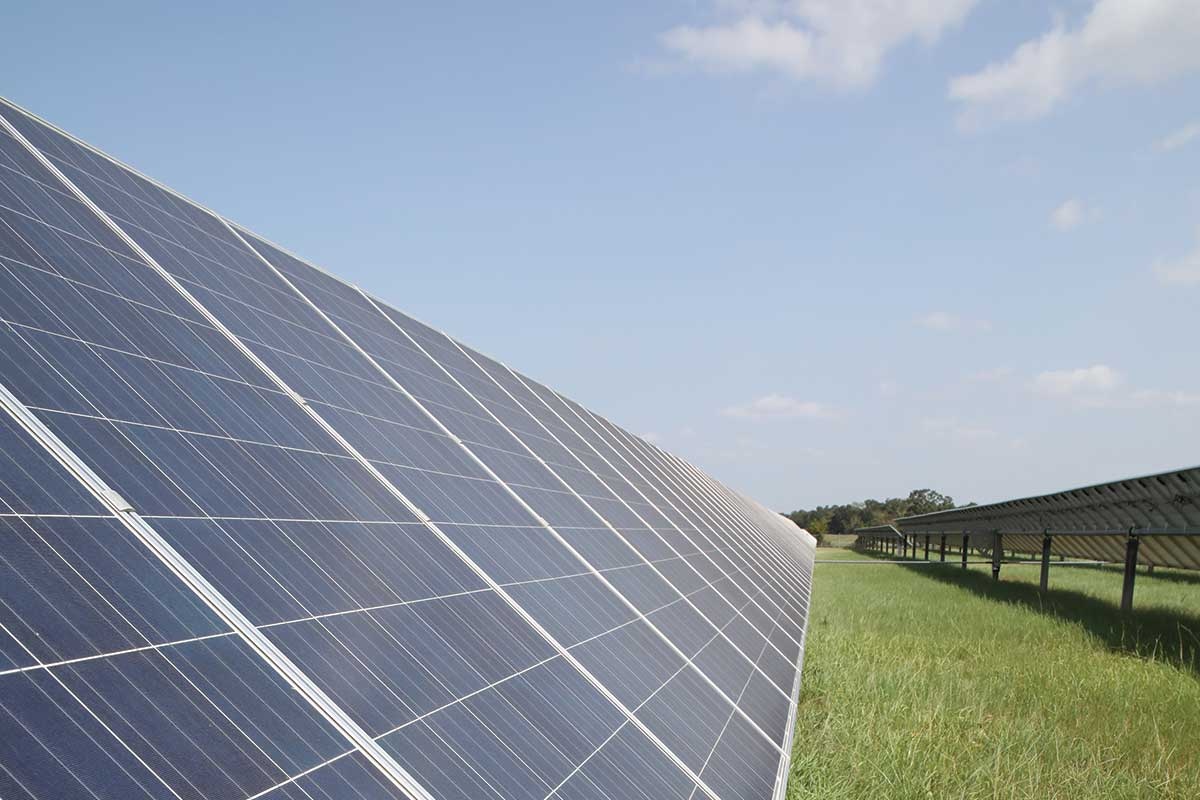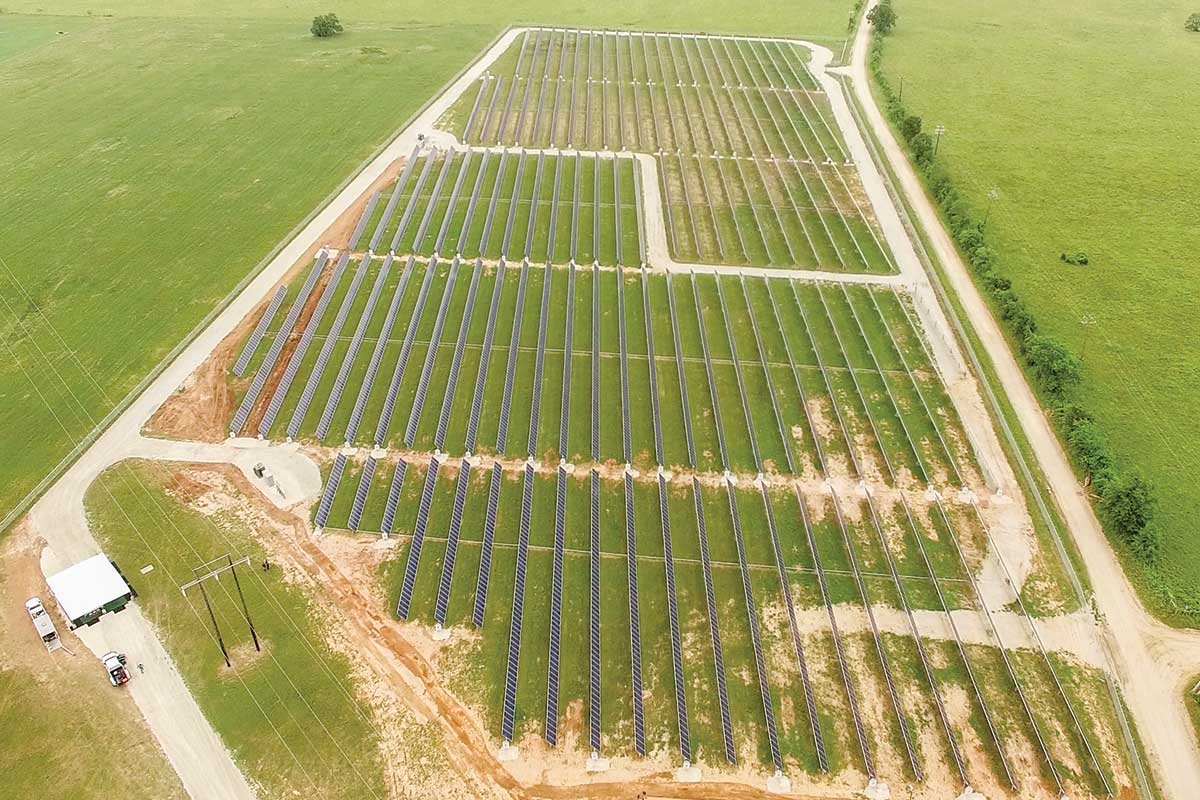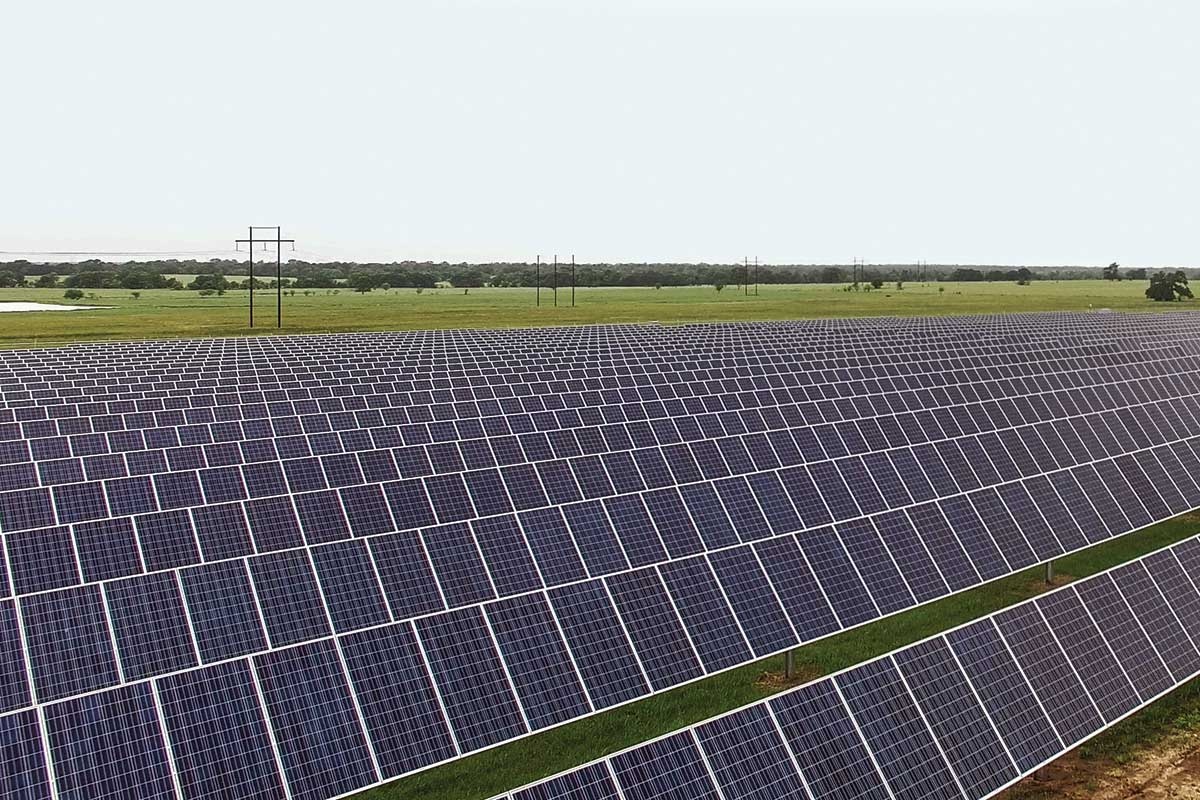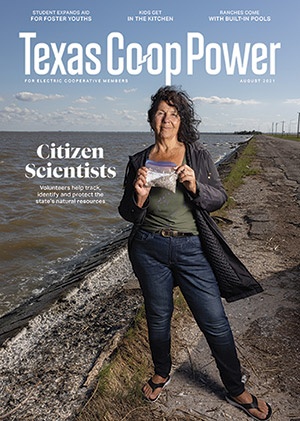As the solar energy industry continues to grow, consumers undoubtedly will have questions about the advancing technology and whether solar is right for them. With that in mind, we recently sat down with MidSouth Electric Co-op’s in-house engineers and experts to discuss everything solar power—from putting solar panels on your home to participating in the MidSouth Community Solar project.
What is MidSouth EC’s solar program and how can members participate?
MidSouth Solar is a 2-megawatt solar farm located west of Bedias. MidSouth EC members have the unique opportunity to purchase up to 500 kilowatt-hours per month of solar energy from the facility. This program comes with a five-year guarantee that the rate per kilowatt-hour will not increase. Members can apply for this option by emailing [email protected].
What is the MidSouth Community Solar project?
The Bedias solar farm consists of 8,420 solar panels on roughly 16 acres of land. The panels are situated in rows and attached to motors that rotate them a few degrees every hour to increase their exposure to direct sunlight, optimizing energy production. On average, a tracking solar installation like this one will generate approximately 25%–35% more energy than a stationary installation. At peak conditions, the Bedias facility will produce 1.994 megawatts. Since construction was completed, it has produced about 4 gigawatt-hours of power per year.
Here are a few other interesting facts about the installation: The solar panels are rated to withstand sustained winds of 91 mph and gusts up to 120 mph. Another benefit of the tracking system is that during winds in excess of 55 mph, the panels will rotate to lay flat. This reduces the impact the wind has on the panels and greatly decreases the possibility of damage. In addition, the panels are rated to withstand damage from hail up to 2 inches in diameter traveling at terminal velocity.
How does the solar farm work?
Without getting too technical, here is a basic explanation: The solar panels are made of a material that can capture energy in the sun’s rays. When sunlight hits the panel, electricity is produced and is transferred by conductors.
The electricity at this point is DC, or direct current, which is similar to that in a car battery, but the electrical grid works on AC, or alternating current. So for the electricity to be useful, it must travel to a piece of equipment called an inverter, which converts the power from DC to AC. This process is similar to electrical outlets in cars, which use an inverter to convert battery voltage from 12-volt DC to 120-volt AC. Solar inverters do the same thing, just at a much larger scale.
Once the electricity is converted to AC, it travels along more conductors to a breaker panel. Here, we can control which inverters are being used. If we have any issues or maintenance that needs to be done, we can shut down a single inverter instead of the whole system.
After the breaker panel, the electricity travels to a distribution transformer, which takes the low AC voltage from the inverters and transforms it into higher AC voltage. From there the electricity travels to a substation transformer, where it is converted from distribution voltage to an even higher transmission voltage. At this point the power is metered and put back onto the transmission grid.
How did the solar farm perform during the winter storm in February?
It’s hard to say exactly how the solar farm performed during the freeze. Solar generation varies according to many factors, the two most important being the amount of sunlight and the temperature. Many people think that sunlight is the only factor—and it is by far the most important—but temperature plays a large role as well. Solar power works best when the air is between 59 and 95 degrees with uninterrupted sunlight. If temps get too hot or too cold, the panels will not generate as much power.
During the winter storm, it was overcast for several days and much colder than the panels were designed for. While the extreme weather did not damage any panels, it did reduce the amount of power they could generate. The main reason the solar farm generated less power was the lack of sunlight caused by overcast conditions, but ice buildup on the panels also impeded their ability to absorb sunlight. These combined factors decreased generation compared to a more normal week in February.

The solar farm did not experience any problems or failures during the event. While the solar farm was generating less power than normal, all of the power that was generated was sent back to the transmission grid overseen by the Electric Reliability Council of Texas and was used to support the grid.
What does MidSouth EC require of members who want to install solar panels on their home?
The member and solar installer must complete four steps to interconnect with MidSouth EC’s system. The co-op needs a completed application, signed short-form contract and Texas professional engineer-stamped one-line diagram—and MidSouth EC must be listed on the member’s homeowners insurance as additionally insured or as an additional interest.
What red flags should members be aware of when dealing with a solar company?
It’s always a red flag when a solar company doesn’t know the requirements of the cooperative and what must come first before entering into a contract. An honest salesperson should educate prospective buyers not only of the benefits of solar but also on the realities. To ensure any solar power system is adequate to meet a member’s needs, that member should provide the solar company with a year’s worth of usage data so the array can be sized properly.
What are some do’s and don’ts of home solar installations?
If you are considering installing solar panels on your home, it’s always best to first consult with the cooperative to understand our metering policy and all requirements. Always investigate the solar company you are considering buying from. Many people are out there to make a sale and don’t stand by the quality of the product they sell. Do not purchase a solar system and sign a contract without first speaking with a MidSouth EC representative to get all of the facts.
Does MidSouth EC offer a solar rebate to members?
MidSouth EC currently offers a rebate to members who generate solar power at their homes. The rebate covers 20% of the installation cost up to $2,000. Once the array has been built and passed inspection and all paperwork has been received, the member can then apply for the rebate. After the rebate has been received and approved, a check for the qualified amount will be mailed directly to the member.
Why is it important for MidSouth EC to know when members install solar on their homes?
There are several reasons why MidSouth EC needs to know when members install solar panels on their homes. The biggest reason is that the standard meter the co-op installs is not designed to meter in two directions—that is, it only measures the energy that MidSouth EC distributes and doesn’t measure power being generated by a member’s solar array. As a result, the member could be putting power back on the co-op’s lines and not receive any credit for it. By participating in MidSouth EC’s distributed generation program, members get a new meter and receive bill credits for any power they put back on our lines.
Critical safety concerns are another reason MidSouth EC needs to know about any solar installations. During an outage, it’s possible that a residential solar installation could feed power onto the cooperative’s lines without our knowledge—putting our line crews in a potentially life-threatening situation.
To reduce this risk to the co-op’s lineworkers, MidSouth EC’s distributed generation review process ensures that members’ solar array inverters have an anti-islanding feature, which disconnects the solar installation from co-op lines if it detects a power outage.

As an added layer of protection, MidSouth EC also requires that a visible disconnect be installed. The cooperative keeps a record of all of the solar installations on its lines. During an outage, lineworkers will open the disconnect to ensure that no power is being put back on the co-op’s lines. When the outage is restored, the lineworkers will return to close the disconnect and return the solar installation to its normal settings.
MidSouth EC reviews solar installations not only for our lineworkers’ safety but also for our members’ safety. During the early days of solar, many companies would perform work that was not safe or correct. As a result, many people were sold systems that didn’t deliver on promises. Even worse, some bad installations created electrical hazards for homeowners. While such scenarios are less of a concern today, MidSouth EC still requires an engineering review to ensure that any solar array meets code requirements before it’s installed. Once installed, the co-op also performs a field inspection to make sure that the approved plans were followed by the installer. These steps protect our members and ensure that solar installations are safe.
From a strictly engineering standpoint, it’s also important for MidSouth EC to know where any solar installations are located so that the co-op can operate and maintain its electrical system effectively. As more distributed solar is installed, it poses several challenges to how the electrical system operates.
Typically, power flows from our substations to the members. As more solar is installed, that power flow could change directions, especially in areas of concentrated solar generation. If we don’t know about these installations, it could cause a lot of issues for our electrical system. Many devices that keep the power flowing are engineered to work with electrons flowing in one direction. Changing the direction requires us to reconfigure and reengineer where and how these devices operate.
When the co-op knows where members are installing solar, we are able to ensure the safety of our crews and our members. In addition, it allows us to better plan for the future and continue to provide reliable power to our members.
What problems can arise when members don’t notify MidSouth EC of their home solar installations?
Generally, the solar company will install a nonfused disconnect, and MidSouth EC requires a fusible disconnect. They may also not have a set of plans stamped by a professional engineer that includes approval of wire and breaker sizes for a particular system. This in turn slows down the process and can be frustrating for members who have already paid and signed a contract.
What does the solar industry look like right now, and what does it mean for MidSouth EC members moving forward?
The solar industry is on the rise, especially in Texas after the February winter storm. Members are looking to couple battery storage with solar power in order to ensure they don’t have to contend with outages. With technological advancements in panel production, panels are becoming more affordable for members. It’s likely we will continue to see a rise in solar applications and battery dispatching on both residential and commercial properties.
Contributors: Jonathan Fuller, Member Relations, and Justin Brysch, Engineering


